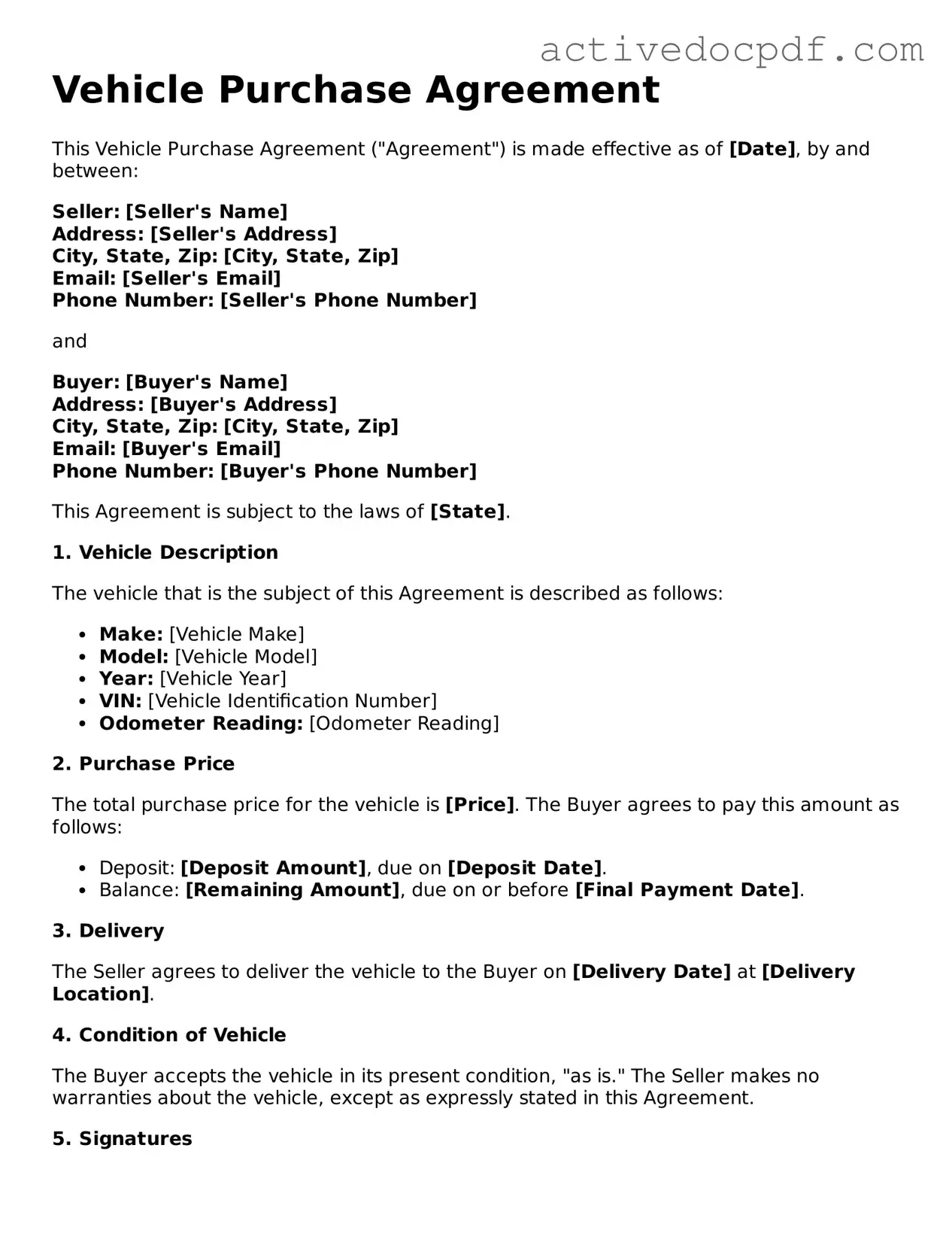What is a Vehicle Purchase Agreement?
A Vehicle Purchase Agreement is a legal document that outlines the terms and conditions of a sale between a buyer and a seller of a vehicle. This agreement serves to protect both parties by clearly defining their rights and responsibilities during the transaction. It typically includes details such as the vehicle's make, model, year, identification number (VIN), purchase price, and any warranties or guarantees associated with the sale.
Why is a Vehicle Purchase Agreement important?
This agreement is crucial for several reasons. First, it provides a written record of the transaction, which can be referenced in case of disputes. Second, it ensures that both parties understand the terms of the sale, reducing the likelihood of misunderstandings. Lastly, it can serve as proof of ownership for the buyer, which is necessary for registration and insurance purposes.
A comprehensive Vehicle Purchase Agreement usually contains the following information:
-
Buyer and seller names and contact information
-
Vehicle details, including make, model, year, and VIN
-
Purchase price and payment terms
-
Any trade-in information, if applicable
-
Warranties or guarantees provided by the seller
-
Signatures of both parties
Can a Vehicle Purchase Agreement be modified after signing?
Yes, a Vehicle Purchase Agreement can be modified after it has been signed, but both parties must agree to the changes. It is essential to document any modifications in writing and have both parties sign the updated agreement to ensure clarity and avoid potential disputes in the future.
Is a Vehicle Purchase Agreement legally binding?
Yes, once both parties sign the Vehicle Purchase Agreement, it becomes a legally binding contract. This means that both the buyer and seller are obligated to fulfill the terms outlined in the agreement. If either party fails to comply, the other party may have legal recourse to enforce the terms or seek damages.
What should I do if I encounter issues after signing the agreement?
If issues arise after signing the Vehicle Purchase Agreement, it is important to first review the document to understand your rights and obligations. If the problem cannot be resolved directly with the other party, consider seeking legal advice. Documentation of any communications and issues will be helpful in resolving disputes.
Is it necessary to have a lawyer review the Vehicle Purchase Agreement?
While it is not mandatory to have a lawyer review the Vehicle Purchase Agreement, doing so can provide valuable peace of mind. A legal professional can help ensure that the terms are fair, that all necessary information is included, and that your interests are adequately protected.
What happens if the seller fails to deliver the vehicle as agreed?
If the seller does not deliver the vehicle as stipulated in the Vehicle Purchase Agreement, the buyer may have several options. The buyer can request a refund of any deposits or payments made, or they may seek to enforce the agreement through legal means. It is advisable to document all communications and attempts to resolve the issue amicably before pursuing legal action.
How can I ensure the Vehicle Purchase Agreement is valid?
To ensure the validity of the Vehicle Purchase Agreement, both parties should carefully review the document for completeness and accuracy. Both signatures must be present, and the agreement should include all essential terms. Additionally, keeping a copy of the signed agreement for personal records is recommended to provide proof of the transaction.
